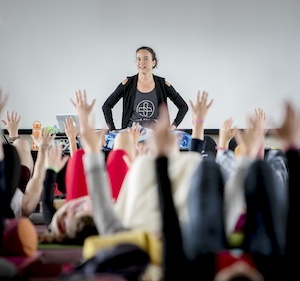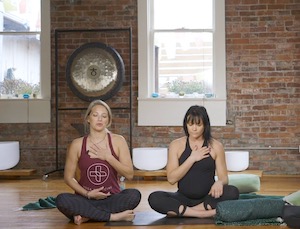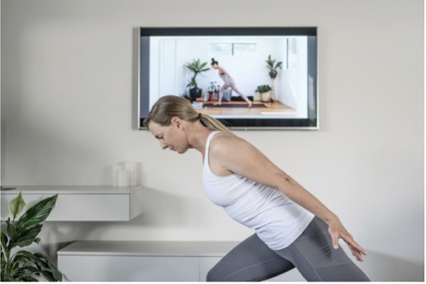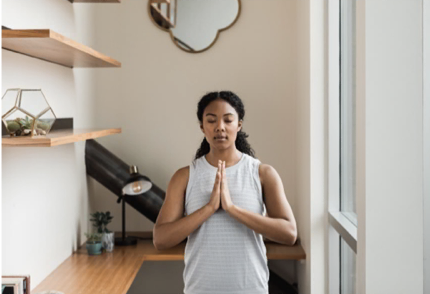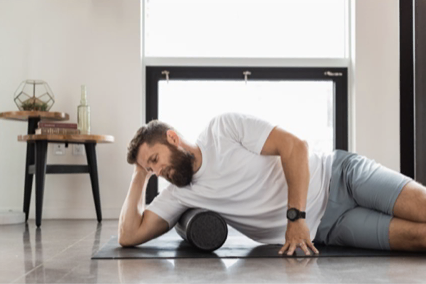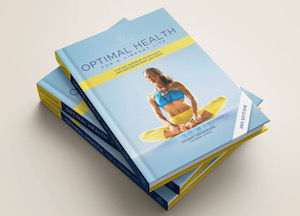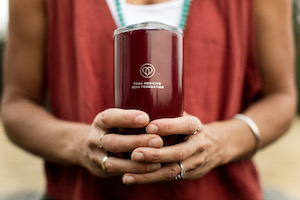Articles, Rachel Land, Uncategorized
Transition to Teaching Private Clients
Rachel Land shares her story of how she transitioned from a group yoga teacher to a private yoga teacher. Then, she offers some advice for those looking to do the same. She is a graduate of our 500HR Teacher Training program.

How I Started Teaching Private Yoga Classes
I became a yoga teacher because of my interest in health and wellness, a natural extension of my own practice. But I didn’t imagine how the role would evolve – how it would open me up to some of the most rewarding experiences of my life.
When I first qualified, all I wanted to do was teach big group classes, challenging poses, and fancy flows. But about a year into teaching, I noticed that I wasn’t actually getting to teach very much. I was leading plenty of classes, but struggling to balance the safety of new students with the need to maintain momentum in the class flow. It seemed almost impossible to go beyond that to help experienced students explore nuance in their posture and alignment. I often spent time after class with the students I had wanted to help but hadn’t been able to.
My First Client
Around this time, one of my group class students (also a personal trainer) referred my first private yoga client to me. The client had fractured T11 & T12 and previously had a serious impact injury to her right hip. She was still in some pain and was slow to move between standing, sitting, and supine. No way she was doing sun salutations!
To be honest, I was terrified. I was fit and healthy with no personal experience of injury rehab, no specialist medical or therapeutic training. I had, in fact, absolutely no idea what I could do with this client that wouldn’t hurt, let alone help her!
Fortunately, she had been working with a yoga teacher already and had a simple program of postures to work through. All I had to do was observe & correct her alignment.
We worked together regularly, and because I hadn’t designed her program I asked lots of questions about what she felt in each pose. We started to leave out postures that felt less useful and add in postures that seemed more useful. I took photos and videos to show her what I saw, and they became a powerful record of her progress. She experienced less pain, she moved and breathed more easily.
Building my Clientele
My client was so excited about her progress that she invited a friend with neck pain to join our sessions in the hope that the friend would continue on with sessions of her own – which she did.
This is when I committed to ongoing training with Yoga Medicine so that I would have the tools to start a yoga program from scratch. Each time I went away for more training, I told students and friends that I was going to learn the skills I needed to offer better private sessions.
Over the years, the referrals have rolled in – some for just a session or two, but others became regulars. I now spend as much time teaching private sessions as I do group classes.
How to Make the Change
So how do you transition from teaching groups to one-on-one?
1. Start somewhere.
Plato said, “The beginning is the most important part of the work”. My first client was pure luck – a referral from a student who knew of my interest in alignment – but all my private work has stemmed from this experience. You need to get a foot in the door, and it might mean offering free or reduced rate sessions, to begin with. So put the word out, approach existing clients with injuries, or even friends, with simply the offer of being able to better help them and get the ball rolling.
2. Don’t be intimidated.
When you start working with injured clients, you might wish you had the knowledge of a doctor or PT.
But it’s actually very grounding not being an expert because it keeps you in a humble place. The focus is less on the theory you know and more on your unbiased observation and enquiry into what the client feels. Recovery often starts as soon as a client feels seen and heard.
You might be surprised how useful your skills as a yoga teacher are here – how to direct a student’s mindful attention to a specific area, how to recognize stress or strain and encourage relaxation, how to see and acknowledge all types of progress. These are the skills your student needs from you, as opposed to their medical experts.
3. Be aware of your limitations.
The flip side of not being an expert is that you need to be clear about your scope of service. If your client is working with a medical expert it’s a great idea to get the client’s permission to consult with them for expert guidance when required. Become part of a team working for your client’s full recovery.
If they aren’t, feel free to suggest that they do before you work on the injured area. If nothing else, it’s a great way to build trust both in your relationship with your client and with the health professionals in your area. There is always useful work that you can do safely in the mean-time – relaxation, visualization, breath-work – and you’d be amazed how simply reducing stress around an injury can reduce pain.
4. Share what you learn.
Once you’re working with clients and enjoying it, tell your friends and your existing students. Each time you head away for training, spread the word that you’re building the skills to work more effectively with clients one-on-one.
Once you’ve had a chance to integrate what you’ve learned, run a workshop to share it with others – this might be the opportunity for someone to recognize that they need help working on that area further, or to think of a friend that does.
5. Build a referral network.
I was lucky enough to have lived in a small town for almost a decade before my teacher training; people knew and trusted me. But even if you’re new to town you can tell your group class students, your friends, and health professionals that your passion is private work, that your training is focused in that direction. Even staying behind after class to offer tips to students can create a bridge to let them know that you offer private sessions if they’re interested in exploring further.
6. Be patient; good things take time.
Just as you didn’t become an amazing group class teacher overnight, it will take time to build a private client base and learn how to work with them effectively. But if you put in the work, humbly and patiently, you might just find yourself changing people’s lives for the better… including your own!
About the Author

Rachel Land is a full-time Power, Vinyasa and Yin yoga teacher based in Queenstown, New Zealand.
She started practicing Hatha yoga as a teenager. She found it helped her to challenge her strong healthy body, then move beyond it to a place of calm and clarity. It took 20 years, a Business Degree, and a stint in corporate marketing for that initial interest in yoga to spark the idea of something more. In 2011 Rachel finally became a Yoga Alliance registered teacher.
Since then she has completed courses in Anatomy & Physiology, Nutrition, Sports Training & Development, Mentoring and Yin Yoga, as well as starting to work her way through a 500-hour yoga teacher training with Tiffany Cruikshank and Yoga Medicine.
But the best way to truly know a teacher is to meet their students. Some of Rachel’s students are strong vinyasa yogis aiming to deepen their personal practice. Others come for the slower, more subtle exploration of Yin yoga. And her therapeutic private yoga students want to learn how yoga can help them feel stronger, more stable, and more serene. Whether they attend group classes, workshops, retreats, or private sessions, the common denominator is lively curiosity; they come to learn – about alignment and anatomy, and about themselves.
As a teacher, Rachel aims to both spark and satisfy that curiosity. She takes her role seriously but takes herself lightly.
You can connect with Rachel via email, her website, Facebook, and Instagram

